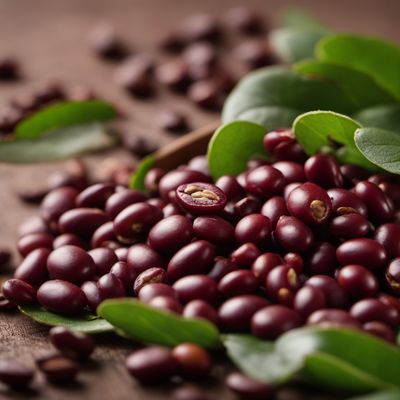
Ingredient
Vetches (dry)
The Nutrient-Packed Legume: Dry Vetches
Dry vetches are small, oval-shaped legumes that come in various colors, including green, brown, and black. They have a firm texture and a rich, earthy flavor that adds depth to soups, stews, salads, and side dishes. When cooked, they become tender yet retain a slight bite, making them a satisfying addition to meals.
Origins and history
Vetches have a long history of cultivation, dating back to ancient times. They were widely grown in the Mediterranean region and were valued for their ability to enrich the soil with nitrogen, making them an essential crop in crop rotation systems. Dry vetches have been a staple in traditional Mediterranean, Middle Eastern, and Indian cuisines for centuries.
Nutritional information
Dry vetches are a nutritional powerhouse, packed with protein, dietary fiber, and essential minerals like iron and magnesium. They are also low in fat and cholesterol, making them a healthy choice for those seeking a plant-based protein source.
Allergens
Dry vetches may cause allergic reactions in individuals with legume allergies. It is advisable to consult with a healthcare professional if you have any concerns or known allergies.
How to select
When selecting dry vetches, choose ones that are uniform in size, free from mold or insect damage, and have a vibrant color. Avoid vetches that appear shriveled, discolored, or have a musty smell, as these may indicate poor quality or age.
Storage recommendations
To maintain the freshness and quality of dry vetches, store them in an airtight container in a cool, dry place. Avoid exposure to moisture, heat, and direct sunlight, as these can cause the legumes to spoil or lose their texture.
How to produce
Dry vetches can be grown by amateur gardeners in regions with suitable climates. They require well-drained soil, moderate sunlight, and regular watering. It is recommended to sow the seeds in early spring or fall, following the specific planting instructions provided with the seeds.
Preparation tips
Dry vetches need to be soaked before cooking to soften their texture and reduce cooking time. They can be boiled, simmered, or pressure-cooked until tender. Once cooked, they can be used in a variety of dishes, such as soups, stews, salads, and side dishes. They also make a nutritious addition to vegetarian patties or spreads.
Culinary uses
Dry vetches are commonly used in Mediterranean, Middle Eastern, and Indian cuisines. They are often featured in dishes like hummus, falafel, soups, and salads. They pair well with herbs, spices, and other legumes, creating flavorful and satisfying meals.
Availability
Dry vetches are commonly available in Mediterranean, Middle Eastern, and Indian grocery stores, as well as specialty stores that cater to international cuisines.
More ingredients from this category » Browse all

Jack beans (dry)
The Versatile Legume: Unveiling the Wonders of Jack Beans

Mung beans (dry)
The Mighty Green Legume

Ervils (dry)
The Nutritional Powerhouse: Exploring the Versatility of Dry Ervils

Soyabeans for consumption (dry)
The Versatile Legume

Guar beans (dry)
Versatile Legumes: Guar Beans

Azuki beans (dry)
The Tiny Powerhouse: Azuki Beans

Stink beans (dry)
The Aromatic Delight: Stink Beans

Borlotti or other common beans (dry)
The Versatile Dried Beans

Lima beans (dry)
The Versatile Lima Beans

Lablab beans (dry)
The Versatile Legume: Lablab Beans

Runner beans (dry)
The Versatile Legume: Exploring the World of Dry Runner Beans

Black eyed peas (dry)
The Lucky Legume